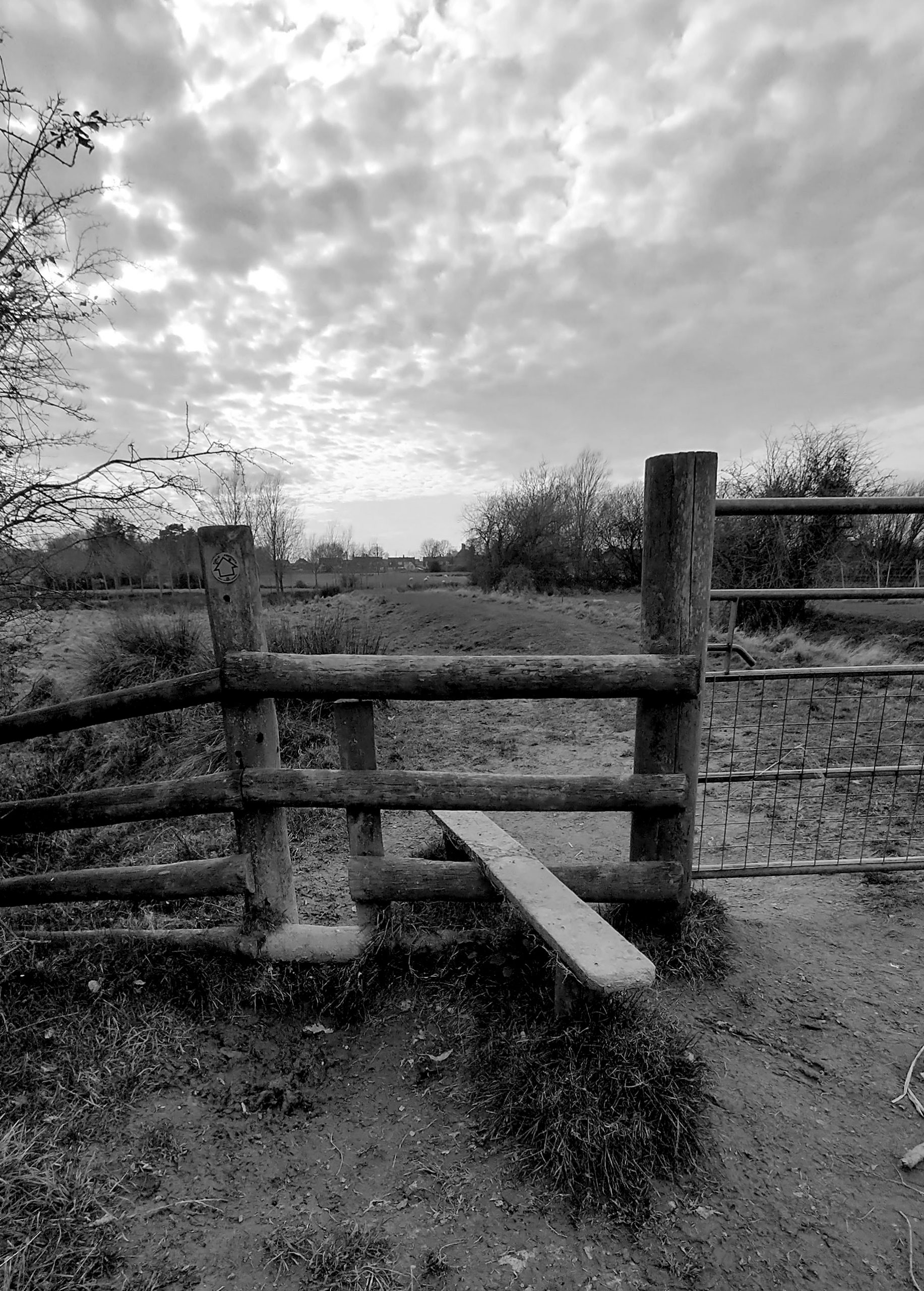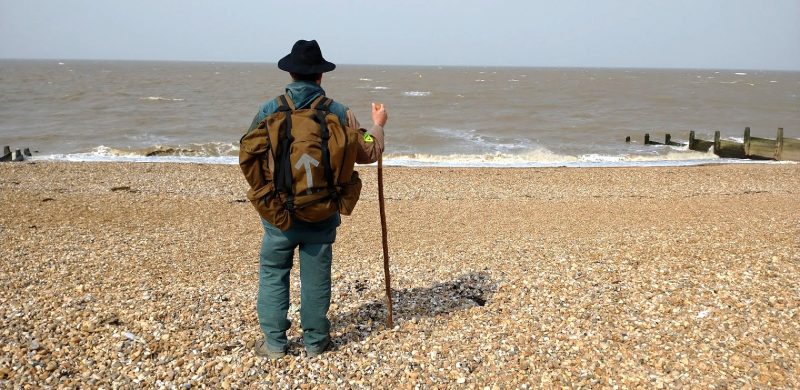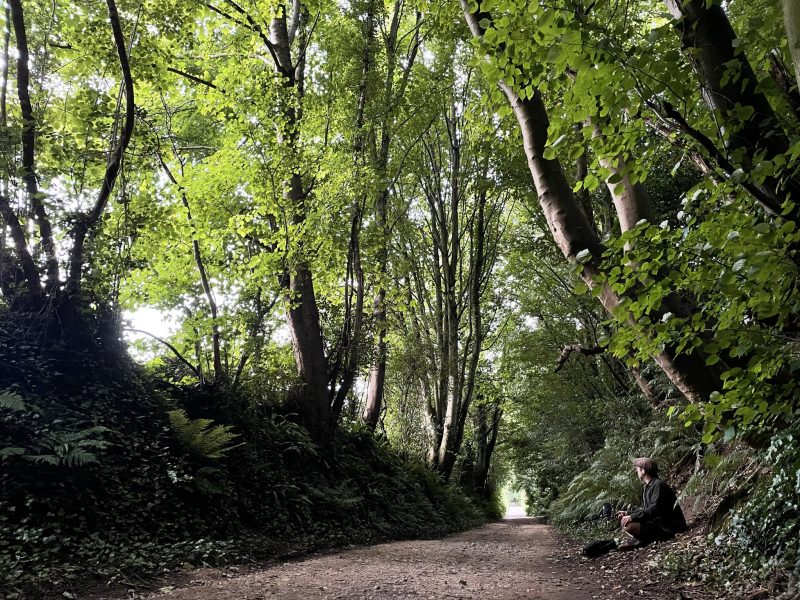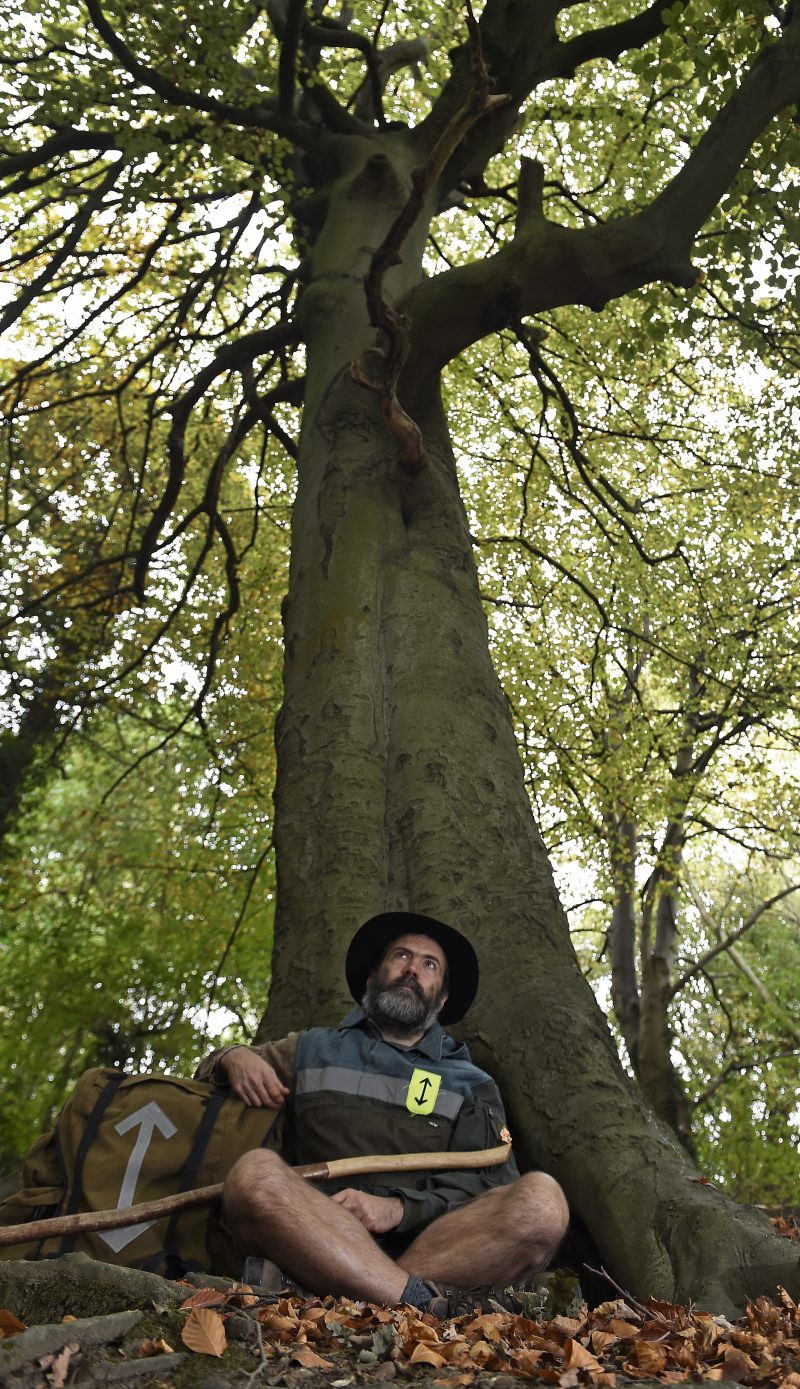Day #14
Somehow it has happened that I didn’t walk through the winter. A combination of pandemic, sprained ankle, and care-giving meant that I didn’t step out when planned in January. So here I am, in early March, sitting on a tree stump behind a care home on the outskirts of Battle, looking out across the fields and woodland to the east of the small town. I close my eyes in a brief deep listening and breathing exercise, a practice I have been cultivating each time I set out to walk. Aligning senses and place, I become aware of a woodcutter nearby. The count of my inward breath falls in with the sound of the axe. As I breathe out, they stop. Breathe in, the axe starts again. We manage four of these cycles before falling out of sync. I open my eyes. I am here. The world is hanging on the tail end of winter. The birdsong seems richer than before I closed my eyes.
Immediately east of Battle the path goes through Great Wood, which has suffered heavily in Storm Eunice a couple of weeks ago. Beyond the wood is a shabby and careless mess of industrial agriculture. I lose my hat in more than one toxic puddle, and intermittent piles of burning brush smoulder, tingeing the air. Passing through a particularly unkempt farm, a JCB sits atop a pile of rubble, shovel dug in the earth like a pioneer leaning on his spade, projecting mastery over the surroundings.
Past Westfield, it’s a relief to enter the medieval landscape of the High Weald, scattered farmsteads and pockets of woodland dotting the rolling fields. Birds of prey abound and herons monitor ancient stew ponds. It’s interesting to see streams here referred to as ghylls, a word I’ve only come across in the Lake District. The old Norse word is ‘gill’, ‘ghyll’ being a faux-antique spelling first found in a poem by Wordsworth. As the sun dips, and the route opens out, I breathe easier and realize I’ve been battling an over-active mind all day, sloughing off city anxieties. With the primal whoop of an oystercatcher in my ears, I follow the pterodactylic lope of the cormorant down the river at dusk, settling into deep time. Under the ecstasy of vast skies over coastal flatlands, I turn north to Rye, where I spend the night.
Day #15
I set out inland, following the tidal River Rother. When I sprained my ankle in January, I did a tarot reading with a friend and drew the Hanged Man. Ways to read the card are as encouragement to take a different view, to practice the art of allowing, or to be at peace with what is – stillness as a virtue. What this equates to for me is a practice of stepping out of the incessant flow of events, information, relationships and corresponding stress responses. As I walk, I’m trying to hold stillness at the core of my movement but I’m not really sure how to go about it. As a distraction or enhancement, I find myself photographing stiles, these fixed structures along the way that allow movement over obstacles, but also offer a seated moment of stillness and reflection. As a filmmaker, I often find my attention channelled through a lens, and am aware of the contradictions therein. Channelling John Clare – ‘he lolls upon each resting stile/ To see the fields so sweetly smile/To see the wheat grow green and long/ And list the weeders’ toiling song.’ – I sit for a moment and look towards a hazy structure on the skyline that marks out the strange and mythical land of Dungeness.
While making Acts Of Quiet Resistance, we did some filming around here, and I made a micro-pilgrimage to Dungeness, to Derek Jarman’s cottage. The rhythms of the world seem to end there, it seems to have its own micro-climate and building regulations; a nation of seabirds, driftwood cottages and nuclear dread. As I eat lunch I think about Riddley Walker, a looming presence from an ancient future in the conscious margins of my pilgrimage. I turn over a piece of bark in my hand, riddled with the tracks of beetle and woodworm, and think about paths forged by walking. I think about the route I’m following. I admire the conjuring out of history and myth that The British Pilgrimage Trust are attempting with the Old Way. It is not an ancient pilgrim route, if it was then I would most likely be following main roads all the way. I know this, and nonetheless have the conviction as I walk that I do so in the steps of ancient pilgrims. I am a mythological autoethnographer. As pagans celebrate Samhain, Imbolc, Lammas or Beltane, they feel a deep connection to ancient druidic tradition and yet these terms originated only in the 1970s. It doesn’t matter, we are reviving traditions left behind by modernity, and that is enough. In the words of Saint Augustine – solvitur ambulando – ‘things are solved by walking’.
Day #16
I wake up this morning a fraudulent pilgrim, in a plush pub room, reading as I await a full vegetarian breakfast being prepared downstairs. With that under my belt, I set out walking. The path begins following the Saxon Shore Way, a route that tracks the coast as it was prior to a huge storm in 1287 that re-drew the coastline in this area, destroying some towns and landlocking others which had been ports until that point. As I reach the Royal Military Canal, a bitter and gusty wind threatens to blow me sideways and sheets of rain whip over the flats from the sea. This is penance, I feel, for a night of comfort, but I do feel like an archetypal pilgrim as I struggle eight miles along the canal. The 28 mile waterway was originally constructed as defence against a Napoleonic invasion and earned the nicknames ‘ Mr Pitts’ ditch’ and ‘the main drain’ at different points in its history. It was used defensively again in the second world war and there are concrete bunkers along it at regular intervals.
There is little to break the tedium of the muddy canal path but for a couple of interesting historical digressions en route in the form of chapels of St Rumwold and Elizabeth Barton. Rumwold was an infant saint who, born to the pagan daughter of the welsh King Penda in around 650 A.D, supposedly shouted ‘I am a Christian’ three times on the day of his birth, delivered a sermon the following day and predicted his own death, which promptly happened the next day. Elizabeth Barton was the ‘Holy Maid Of Kent’ who lived in a now-ruined chapel set in the hillside overlooking Romney Marsh in the sixteenth century. She began making prohecies and the chapel became a pilgrim destination. She became a feature of the court of Henry VIII for as long as her predictions didn’t contradict his whims, which they eventually did and she earned the dubious honour of becoming the only woman whose head ended up impaled on a spike at London Bridge.
My head is down all day, shoulder into the weather. Walking is really hard, as it often is on the last day. I can’t really say if carrying stillness with me as I move has been helpful, but as I move towards the end of my pilgrimage, how to be a stationary pilgrim, how the walking continues to do its work after the physical act stops.





